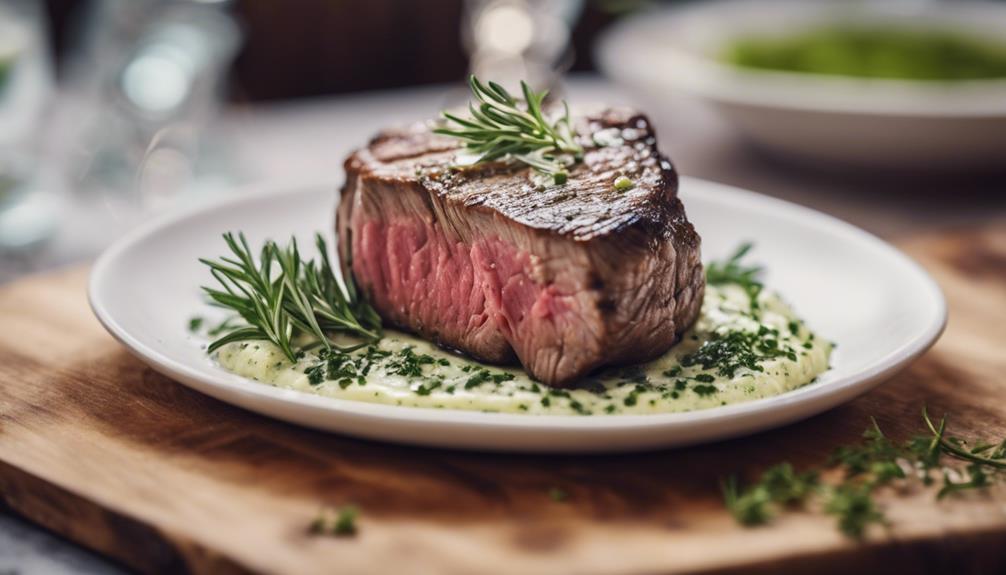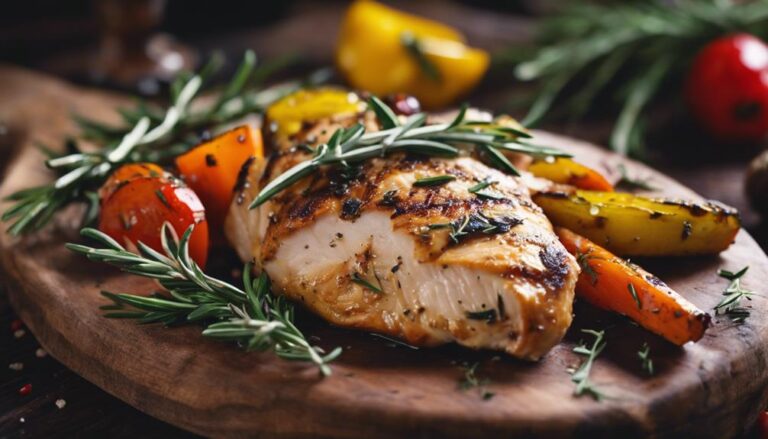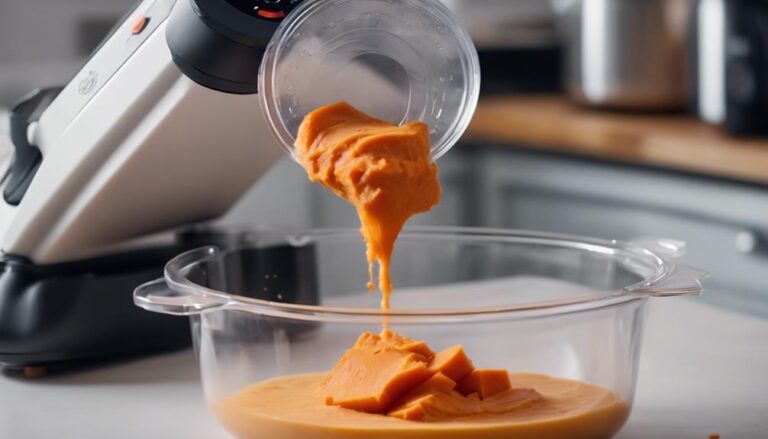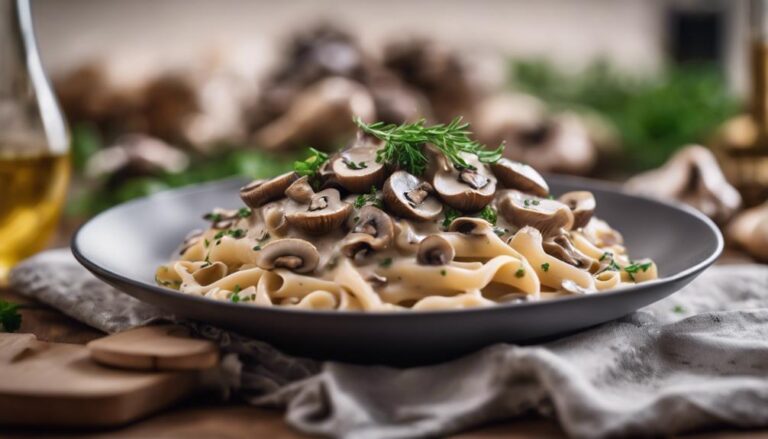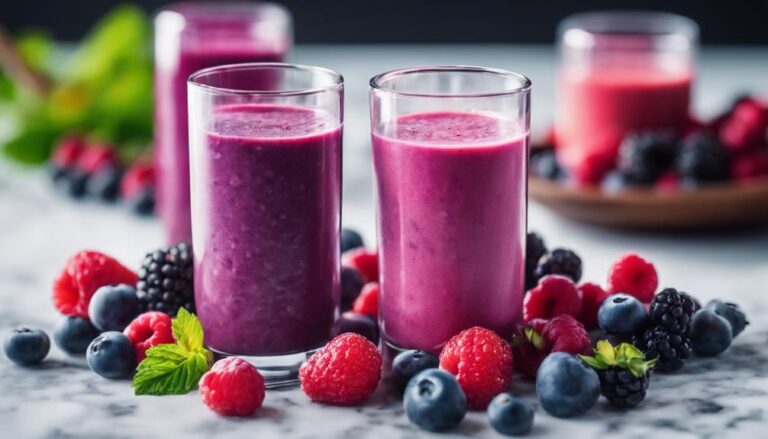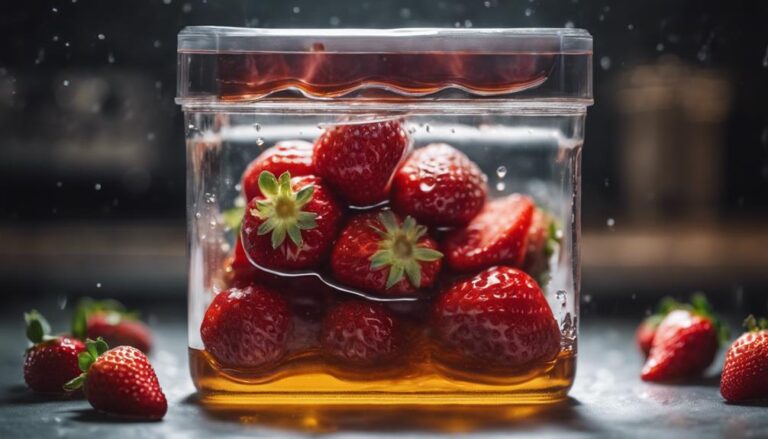Sous Vide Steak With Herb Butter
Transform your steak into a culinary delight by sous vide cooking with herb butter. Seal your steak in a bag and set precise temperature for tenderness. Sear the steak in herb butter for richness and aroma. Impress with gourmet flavors at home effortlessly.
What You Will Learn Here
- Sous vide ensures precise cooking for tender steaks.
- Herb butter adds richness and flavor during searing.
- Sear steak in high-temperature skillet for a perfect crust.
- Rest steak before slicing to retain juices.
- Elevate dish with gourmet herb butter sauce.
Origin of Sous Vide
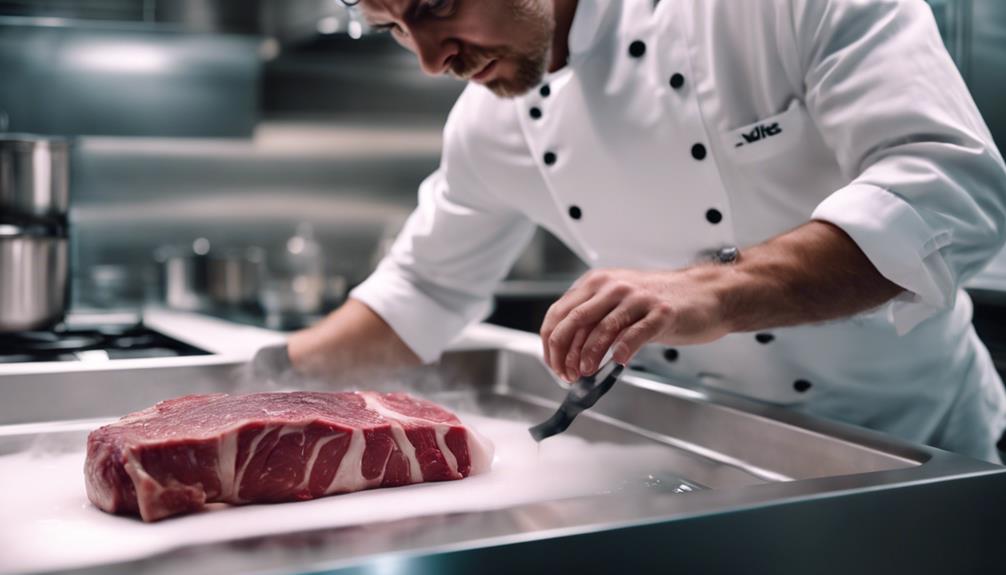
Sous Vide is a cooking method that involves sealing food in airtight bags and cooking it in a water bath at precise temperatures. This technique has a history rooted in French culinary practices.
Over time, sous vide has evolved, moving from professional kitchens to home cooking settings, making it accessible to a wider audience. The innovation of sous vide has revolutionized the way food is prepared.
It offers precise control over the cooking process and results in tender, flavorful dishes.
Sous Vide History
Originating in France in the 1970s, the sous vide cooking technique revolutionized the culinary world with its precise temperature control and retention of flavors. Initially developed by Georges Pralus and later popularized by chefs like Bruno Goussault, sous vide, which translates to 'under vacuum,' involves cooking food in vacuum-sealed bags at precisely controlled low temperatures in a water bath. This method was first utilized to maintain the juiciness and tenderness of foie gras, but its applications quickly expanded to a wide range of ingredients.
The history of sous vide is closely tied to advancements in food safety and technology. Chefs and food scientists collaborated to perfect the technique, leading to the development of specialized equipment like immersion circulators and vacuum sealers. Over time, sous vide migrated from high-end restaurants to home kitchens, empowering amateur cooks to achieve professional-level results with ease. As the popularity of sous vide continues to grow, it remains a testament to the marriage of culinary artistry and scientific precision.
Technique Evolution
The evolution of the sous vide technique stemmed from a quest for culinary perfection and innovation. In the 18th century, the concept of sous vide began with Sir Benjamin Thompson, a physicist who discovered that food cooked in a vacuum-sealed container retained more flavors and juices. This finding laid the groundwork for further exploration into the sous vide method.
Fast forward to the 1960s, and French and American chefs like Georges Pralus and Sir Benjamin Thompson further refined the technique. They experimented with precise temperature control and extended cooking times to achieve unparalleled consistency and tenderness in their dishes. As technology advanced, the sous vide method became more accessible to professional kitchens and eventually to home cooks.
Today, sous vide has become a staple in culinary circles, celebrated for its ability to produce perfectly cooked meals with minimal effort. The technique's evolution showcases how a simple idea rooted in scientific principles can revolutionize the way we approach cooking, ushering in a new era of precision and flavor.
Culinary Innovation
Culinary innovation in the world of cooking techniques has been greatly influenced by the introduction of sous vide methodology. Sous vide, a French term meaning 'under vacuum,' was developed in the 1970s by Georges Pralus. Originally an industrial food preservation method, sous vide has evolved into a popular culinary technique used by chefs worldwide.
The sous vide process involves vacuum-sealing food in a plastic pouch and cooking it in a water bath at a precise temperature for an extended period. This method allows for precise control over the cooking temperature, resulting in evenly cooked food with enhanced flavors and textures.
Sous vide has revolutionized the way chefs approach cooking, leading to tender meats, perfectly cooked vegetables, and infused flavors. This technique has gained popularity not only in high-end restaurants but also among home cooks looking to elevate their culinary skills.
Key Steak Seasonings
For flavorful steak, consider seasoning with a blend of herbs and spices. When it comes to enhancing the taste of your sous vide steak, the right seasonings can make all the difference. Here are some key steak seasonings to take your dish to the next level:
- Garlic Powder: Adding a punch of savory flavor, garlic powder complements the richness of the steak, creating a delicious umami taste.
- Rosemary: Infusing a hint of earthy aroma, rosemary brings a touch of freshness to your steak, elevating its overall profile.
- Black Pepper: Providing a gentle heat and depth of flavor, black pepper adds a subtle kick that enhances the savory notes of the meat.
- Thyme: With its slightly minty and lemony undertones, thyme brings a unique flavor that pairs well with the richness of steak.
- Paprika: Offering a mild sweetness and smoky essence, paprika not only enhances the visual appeal of your steak but also adds a delightful flavor dimension.
Trending Sous Vide Dishes
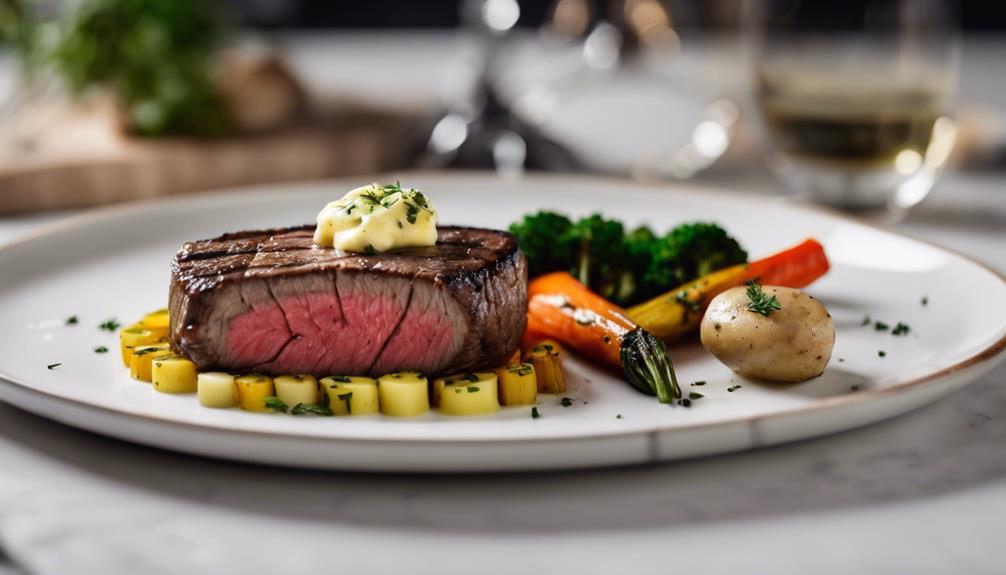
Curious about what's hot in the sous vide world? Explore trending dishes like Sous Vide Ribeye Delight, Sous Vide Salmon Fillet, and Sous Vide Pork Chops to elevate your culinary skills and impress your taste buds.
These dishes showcase the versatility and precision of sous vide cooking, offering a range of flavors and textures to satisfy your cravings and culinary curiosity.
Try your hand at these trending sous vide dishes to experience a new level of cooking finesse and flavor infusion in the comfort of your own kitchen.
Sous Vide Ribeye Delight
Indulge in a succulent Sous Vide Ribeye Delight, a must-try in the world of trending sous vide dishes. This mouthwatering dish offers a perfect balance of tenderness and flavor that will elevate your culinary experience.
Here are some reasons why you should savor this delectable Sous Vide Ribeye:
- Juicy Perfection: The sous vide cooking method guarantees that every bite of your ribeye is juicy and packed with flavor.
- Melt-in-Your-Mouth Texture: Experience the sensation of your ribeye effortlessly melting in your mouth, offering a truly delightful dining experience.
- Enhanced Natural Flavors: By cooking the ribeye in a vacuum-sealed bag, the meat retains its natural juices and flavors, resulting in a more intense and enjoyable taste.
- Customized Seasonings: Tailor the seasonings to your preference, whether you enjoy a classic blend of herbs or a touch of spice, to create a personalized culinary masterpiece.
- Restaurant-Quality at Home: Impress your guests or simply treat yourself to a restaurant-quality ribeye steak without leaving the comfort of your home.
Sous Vide Salmon Fillet
Savor the perfectly cooked Sous Vide Salmon Fillet, a rising star among trending sous vide dishes, to elevate your dining experience with its delicate flavors and moist texture.
- Tender Perfection: The sous vide method guarantees your salmon is cooked to the ideal doneness, preserving its tenderness.
- Flavor Infusion: By cooking the salmon in a sealed bag, all the flavors and seasonings are locked in, resulting in a burst of delicious taste with every bite.
- Moist and Juicy: Unlike traditional cooking methods that can dry out salmon, sous vide ensures a juicy and moist fillet every time.
- Consistent Results: With precise temperature control, you can achieve consistent results, making it easier to cook your salmon to perfection.
- Healthy Eating: Sous vide cooking requires little to no added fats, making it a healthy choice for enjoying succulent salmon without excess oils.
Indulge in the Sous Vide Salmon Fillet for a culinary experience that will leave your taste buds dancing with delight.
Sous Vide Pork Chops
For succulent and perfectly cooked pork chops, try the trending sous vide method to elevate your dining experience. Sous vide pork chops offer a juicy and tender texture that's difficult to achieve through traditional cooking methods. Here are five reasons why you should consider trying sous vide pork chops:
- Juiciness: The sous vide cooking technique guarantees that the pork chops retain their natural juices, resulting in a moist and flavorful bite.
- Precision: With sous vide, you have precise control over the cooking temperature, ensuring that your pork chops are cooked to the exact level of doneness you desire.
- Tenderness: By cooking the pork chops in a water bath for an extended period at a consistent temperature, the meat becomes incredibly tender without being overcooked.
- Flavor Infusion: Seasonings and marinades penetrate the pork chops more effectively during the sous vide process, enhancing the overall flavor profile.
- Consistency: Sous vide cooking delivers consistent results every time, making sure that your pork chops are cooked evenly from edge to edge.
Searing for Sous Vide Steaks
When searing sous vide steaks, mastering perfect sear techniques is crucial to lock in juices and create a flavorful crust. Enhancing the flavor profile through searing adds a depth of taste that complements the sous vide cooking method.
Achieving ideal doneness by searing at the right temperature and for the correct duration guarantees a mouthwatering steak experience.
Perfect Sear Techniques
To achieve a perfect sear on your sous vide steak, make sure your skillet is preheated to a high temperature. Heating the skillet properly is essential for creating that delicious brown crust on your steak.
Once your steak is cooked in the sous vide, pat it dry with paper towels to remove excess moisture. Season your steak generously with salt and pepper for added flavor.
Add a high smoke point oil like canola or grapeseed oil to the preheated skillet. Carefully place your steak in the skillet, ensuring it makes full contact with the surface. Let it sear without moving it around too much to allow for proper browning.
Depending on your preference, sear each side for about 1-2 minutes until a beautiful crust forms. Remember to sear the edges as well for an all-around seared finish.
Once seared to perfection, remove the steak from the skillet and let it rest before slicing and serving.
Enhancing Flavor Profile
After achieving a perfect sear on your sous vide steak, the next step to enhancing its flavor profile is by infusing herb butter during the final searing process. Adding herb butter brings a rich and aromatic element that complements the steak's juicy tenderness from the sous vide cooking.
To infuse herb butter, simply melt butter in a pan over medium heat, then add fresh herbs like rosemary, thyme, or garlic for a burst of flavor. Let the herbs steep in the butter for a few minutes to allow their essence to blend in. Once infused, remove the herbs from the butter and increase the heat to high.
Place your sous vide steak in the hot pan and sear each side for a minute or two, basting it with the herb-infused butter. This final searing process not only creates a beautiful crust on the steak but also imparts a delightful herbaceous taste that elevates the overall flavor profile. The herb butter adds depth and complexity to your sous vide steak, making each bite a culinary delight.
Achieving Optimal Doneness
For best results when searing your sous vide steak, make sure the pan is preheated to a high temperature. Properly searing the steak after it has been cooked sous vide is vital to achieving that delicious crust on the outside. Heat a cast-iron skillet or a heavy-bottomed pan over high heat until it's smoking hot. This step helps create a beautiful sear and locks in the juices from the sous vide cooking process.
Once the pan is hot, add a high smoke-point oil like vegetable oil or grapeseed oil. Gently place the sous vide steak in the pan, being careful not to overcrowd it. Allow the steak to sear without moving it for about 1-2 minutes per side. This quick sear will give your steak a nice caramelized crust without overcooking the inside.
Remember to sear the sides of the steak as well, holding it with tongs for a few seconds on each side. Once fully seared, remove the steak from the pan and let it rest for a few minutes before slicing. This final step ensures that the juices redistribute within the meat for a perfectly tender and flavorful sous vide steak.
Final Thoughts
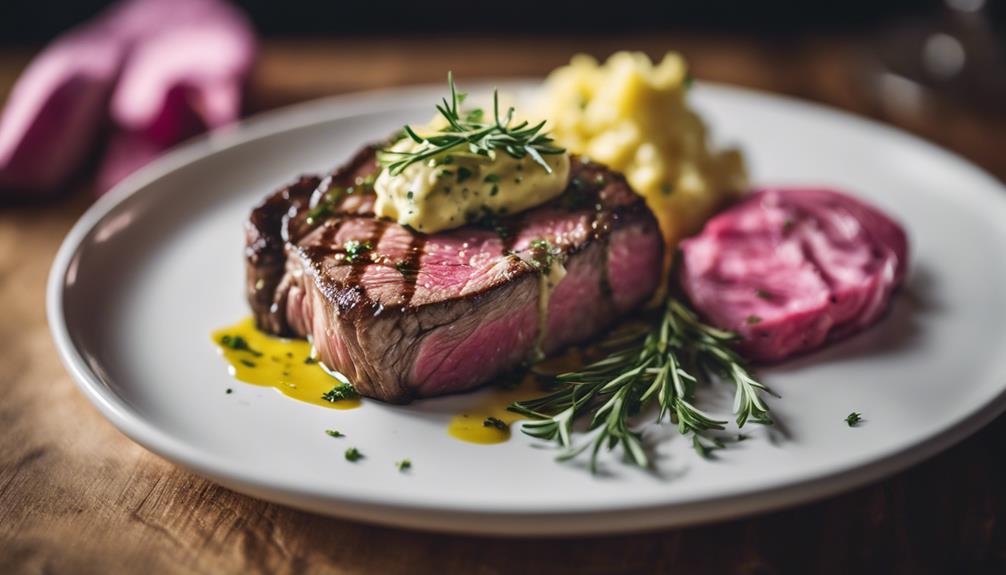
Considering all the steps involved in preparing this delicious sous vide steak with herb butter, you're now equipped to impress your dinner guests with a restaurant-quality meal right in your own kitchen. The sous vide technique guarantees a perfectly cooked steak, tender and juicy from edge to edge. By following the precise temperature settings and cooking times, you can achieve your desired level of doneness with consistency every time.
One key advantage of sous vide cooking is the ability to set it and forget it. Once your steak is vacuum-sealed and placed in the water bath, you can attend to other tasks without worrying about overcooking. This hands-off approach frees you up to focus on preparing the herb butter or side dishes to complement your steak.
The herb butter adds a decadent finish to the steak, infusing it with rich flavors that elevate the dish to a gourmet level. The combination of garlic, herbs, and butter creates a luxurious sauce that melts into the warm steak, enhancing its taste and texture.
Frequently Asked Questions
Can Sous Vide Cooking Be Used for Desserts?
Yes, you can definitely use sous vide cooking for desserts. It's a fantastic technique for making custards, poached fruits, and even cheesecakes. Sous vide guarantees precise temperature control, resulting in perfectly cooked and creamy treats.
What Are Alternative Searing Methods for Steak?
When searing steak, consider using methods like pan-searing, grilling, or broiling for a delicious crust. These techniques can enhance the flavor and texture of your steak, providing a nice char and locking in juices.
Is It Safe to Leave Sous Vide Unattended?
Leaving sous vide unattended can be risky due to potential water evaporation, leading to equipment malfunctions or food safety concerns. Always monitor your setup for safety and best results during the cooking process.
Can Sous Vide Be Used for Vegetables?
Yes, you can use sous vide for vegetables. It's a fantastic method that helps retain flavors and nutrients. Just adjust the temperature and timing based on the vegetable type for perfect results every time.
How Can I Prevent Herb Butter From Separating?
To prevent herb butter from separating, make sure ingredients are at room temperature before mixing. Slowly incorporate softened butter into herbs, whisking thoroughly. Refrigerate to set. Soften before serving. Enjoy the creamy, flavorful herb butter on your dishes.
Conclusion
To sum up, sous vide cooking offers a precise and consistent method for preparing delicious steaks at home. By seasoning the steak with herbs and cooking it in a water bath, you can achieve tender and flavorful results.
Searing the steak after sous vide cooking adds a caramelized crust for added texture and taste. With the popularity of sous vide rising, this technique is a must-try for steak enthusiasts looking to elevate their culinary skills.
